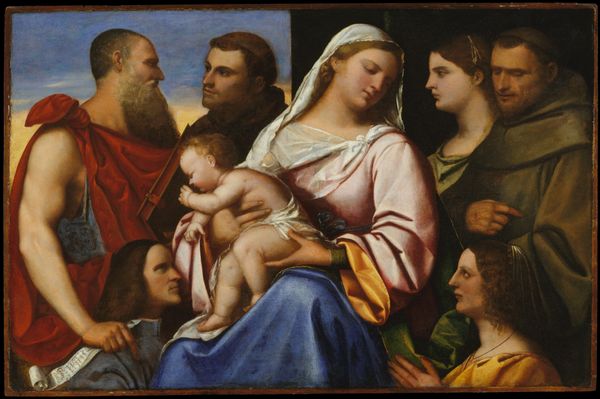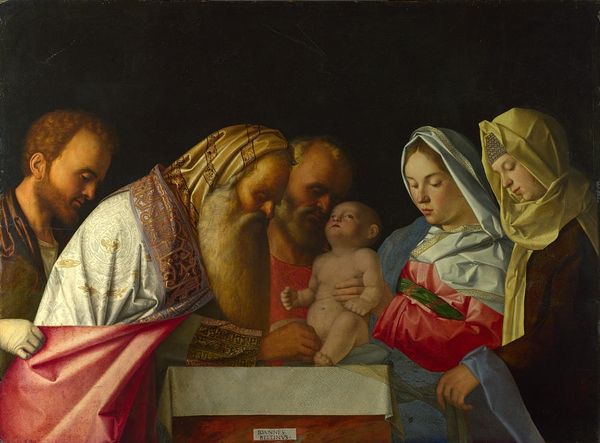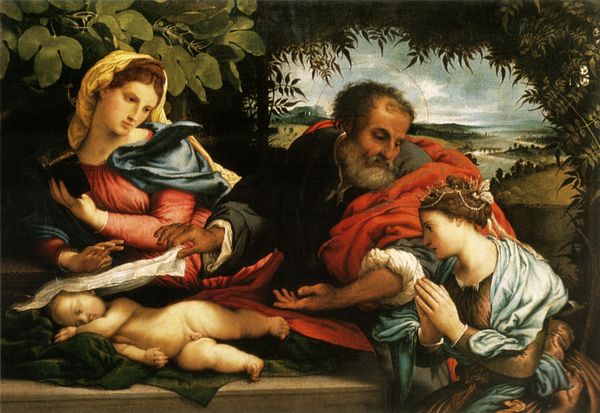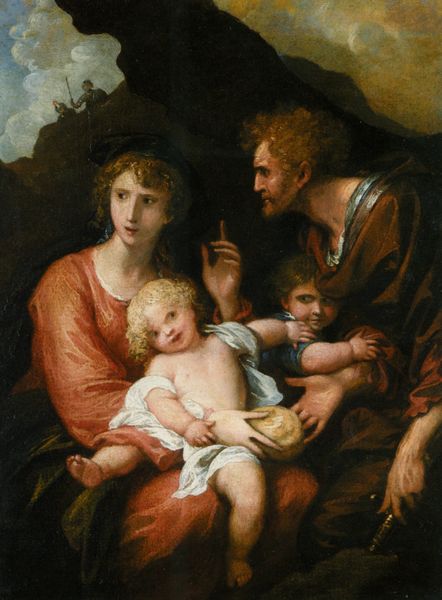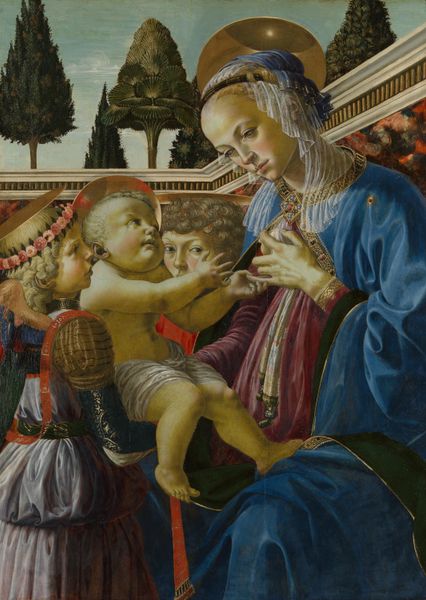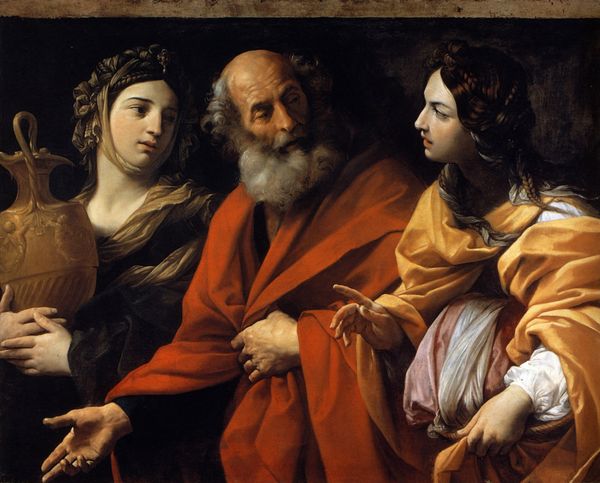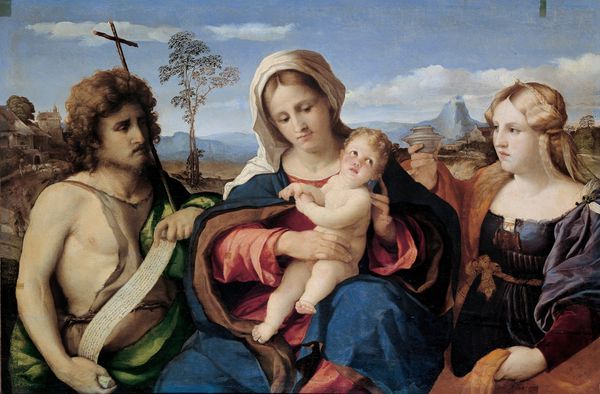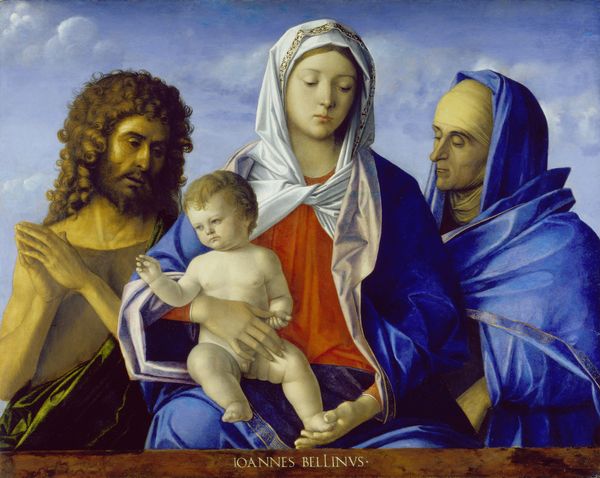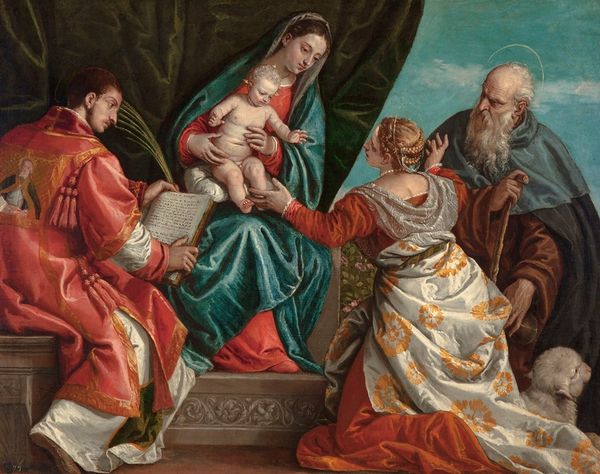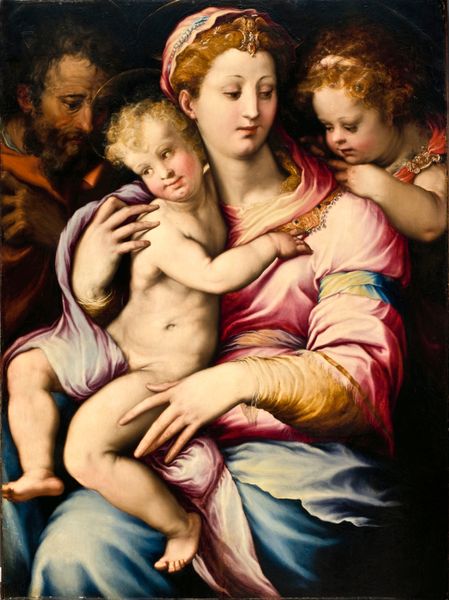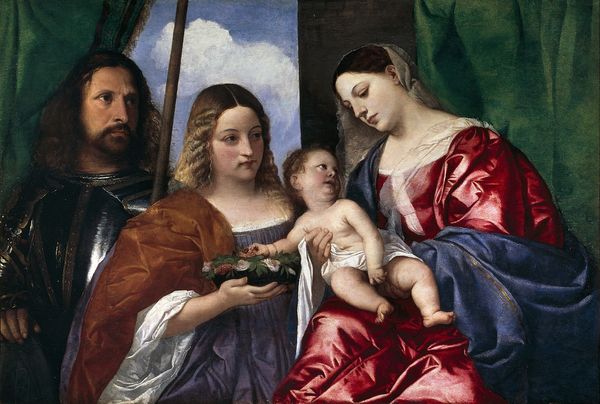
tempera, painting, oil-paint
#
portrait
#
high-renaissance
#
allegory
#
tempera
#
painting
#
oil-paint
#
figuration
#
child
#
christianity
#
mythology
#
history-painting
#
academic-art
#
italian-renaissance
#
portrait art
#
christ
Dimensions: 80 x 70 cm
Copyright: Public domain
Curator: I find Lorenzo Lotto's "Madonna with St. Roch and St. Sebastian," created around 1522, to be an interesting synthesis of High Renaissance style and personal expression. It's rendered with oil paint and tempera, providing it with a depth of color and luminosity that’s captivating. Editor: There’s something hauntingly tender about it. The color palette is rich, but there’s an underlying sense of melancholy—the two saints frame Mary and the child, yet they’re figures of suffering, almost intruding upon an intimate maternal scene. Curator: Exactly! Saint Roch and Saint Sebastian are intercessory saints invoked against the plague. The symbols associated with them resonate deeply: Saint Roch with his bubo and pilgrim’s staff, and Saint Sebastian pierced with arrows. These are potent symbols of affliction and faith’s triumph over adversity, archetypes representing hope during a devastating period. Editor: The painting becomes an ideological battleground, embodying the struggle against disease. Yet, by positioning these traditionally stoic figures beside Mary and the infant Christ, it questions the narrative of divine protection. Aren't the plague and suffering intrinsically linked to the very belief system intended to alleviate them? Curator: That’s a compelling perspective. In the cultural context, Lotto may be drawing on older symbolic traditions to reassure viewers of divine protection against real dangers like the plague. The arrangement presents these saints as intermediaries—channels through which prayers ascend. Baby Jesus is the sacred protector from sickness. Editor: But I still feel the unease stemming from their placement—these figures who experienced immense personal suffering watching over the source of divine promise! They bring to mind the systemic failures that disproportionately affect marginalized groups even during so-called times of divine intercession. What's represented, when stripped of purely religious understanding, can reveal failures in society's responsibility to care for all of its people. Curator: Perhaps the duality is intentional, embodying not just piety but an earthly reality and concern for its implications. Lotto's work allows us to perceive multiple layers simultaneously—hope, pain, faith, doubt—captured in this sacred gathering. Editor: Right. Lotto has created a powerful visual statement. By uniting these historical and theological perspectives, this devotional work opens up discourse on compassion, societal responsibility, and, above all, our understanding of affliction's enduring impact.
Comments
No comments
Be the first to comment and join the conversation on the ultimate creative platform.


